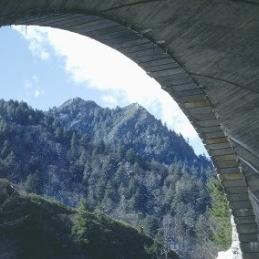Browse
"Mercury Concentrations in Fish from the Great Smoky Mountains National Park." Analytica Chimica Acta 70, no. 1 (1974): 41-47.
"Modeling the Effects of Fire On the Long-Term Dynamics and Restoriation of Yellow Pine and Oak Forests in the Southern Appalachian Mountains." Restoration Ecology 15, no. 3 (2007): 400-411.
"A Molecular Clone and Culture Inventory of the Root Fungal Community Associated with Eastern Hemlock in Great Smoky Mountains National Park." Southeastern Naturalist 13, no. 6 (2014): 219-237.
"A Molecular Clone and Culture Inventory of the Root Fungal Community Associated with Eastern Hemlock in Great Smoky Mountains National Park." Southeastern Naturalist 13, no. 6 (2014): 219-237.
"Mountain Temperatures in the Southeastern and Southwestern United States during Late Spring and Early Summer." Journal of Applied Meteorology and Climatology 2, no. 4 (1963): 473-483.
"Multipliers and Life Cycles: A Comparison of Methods for Evaluating Tourism and Its Impacts." Journal of Economic Issues 31, no. 4 (December) (1997): 917-932.
"A Multi-Scale Assessment of Local and Contextual Threats to Existing and Potential U.S. Protected Areas." Landscape & Urban Planning 101, no. 3 (2011): 215-228.
"The Mushroom TWiG: A Marvelous Mycological Menagerie in the Mountains." Southeastern Naturalist 6, no. sp2 (2007): 73-82.
"Natural Background Visibility and Regional Haze Goals in the Southeastern United States." Journal of the Air & Waste Management Association 55, no. 11 (2005): 1600-1620.
"Natural History and Distribution of the Enigmatic Southern Appalachian Opilionid, Fumontana deprehendor Shear (Laniatores: Triaenonychidae), with an Assessment of Morphological Variation." Zootaxa 1242 (2006): 21-36.
"Natural Variation in Abies of the Southern Appalachians." Forest Science 15, no. 3 (1969): 238-245.
"A New National Park in the East: The Great Smokies, a Ten-Million-Dollar Gift to the Government." American Forests and Forest Life 36 (1930).
"A New Species of Ptomaphagus (Appadelopsis) (Coleoptera : Leiodidae) from Great Smoky Mountains National Park, U.S.A." Zootaxa, no. 1478 (2007): 61-64.
"Not Too Late for American Biodiversity?" BioScience 62, no. 3 (2012): 218-219.
"Notes on Botryolepraria lesdainii in North America." Evansia 23, no. 2 (2006): 34-35.
"Notes on Mayflies of the Southeastern States (Ephemeroptera)." Journal of the Elisha Mitchell Scientific Society 53, no. 1 (1937): 27-86.
"Notes on the Lichen Genus Lepraria in Great Smoky Mountains National Park, Southeastern North America: Lepraria lanata and L. salazinica spp. nov." Opuscula Philolichenum 4 (2007): 51-54.
"Nutrient Cycling in Red Spruce Forests of the Great Smoky Mountains." Canadian Journal of Forest Research 21, no. 6 (1991): 769-787.
"Ozone and PM2.5 Exposure and Acute Pulmonary Health Effects: A Study of Hikers in the Great Smoky Mountains National Park." Environmental Health Perspectives 114, no. 7 (2006): 1044-1052.
"Planning for the Great Smokies Region." The Tennessee Planner 1, no. 3 (1940): 83-88.
"Preliminary Findings From the Great Smoky Mountains National Park Air Quality and Hiker Health Study." Epidemiology 15, no. 4 (2004): S216.
"Reanalysis of Archived IMPROVE PM2.5 Samples Previously Analyzed over a 15-Year Period." Environmental Science & Technology 46, no. 18 (2012): 10106-10113.
"Red-Cockaded Woodpecker Nesting in the Great Smoky Mountains National Park." The Migrant 36, no. 3 (1965): 59.
"Rhododendron Decline in the Great Smoky Mountains and Surrounding Areas." Southeastern Naturalist 13, no. 1 (2014): 1-25.
"Rhododendron Decline in the Great Smoky Mountains and Surrounding Areas." Southeastern Naturalist 12, no. 4 (2013): 703-722.
















































